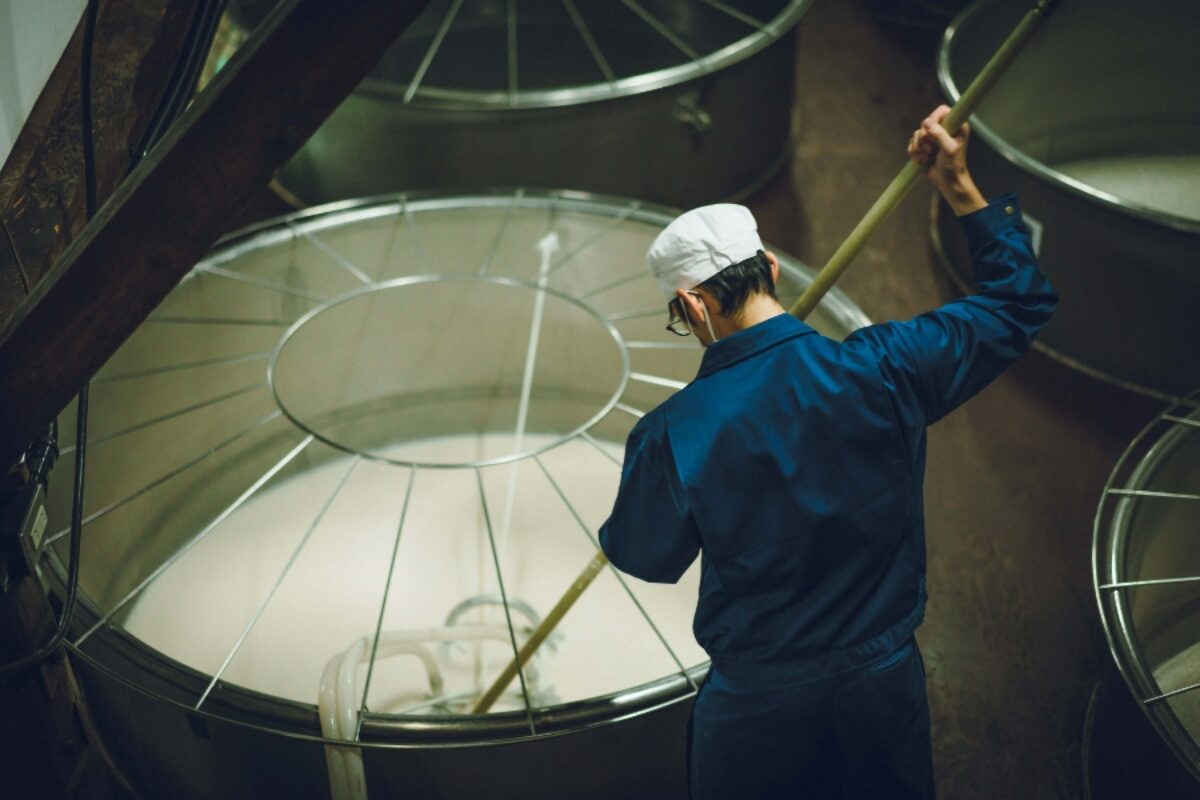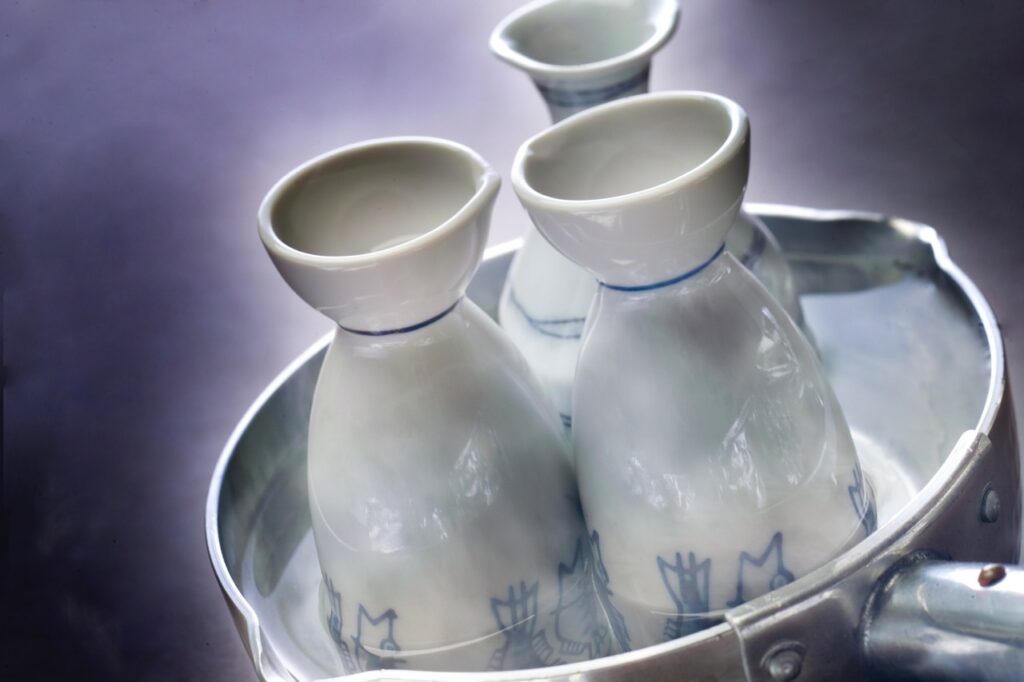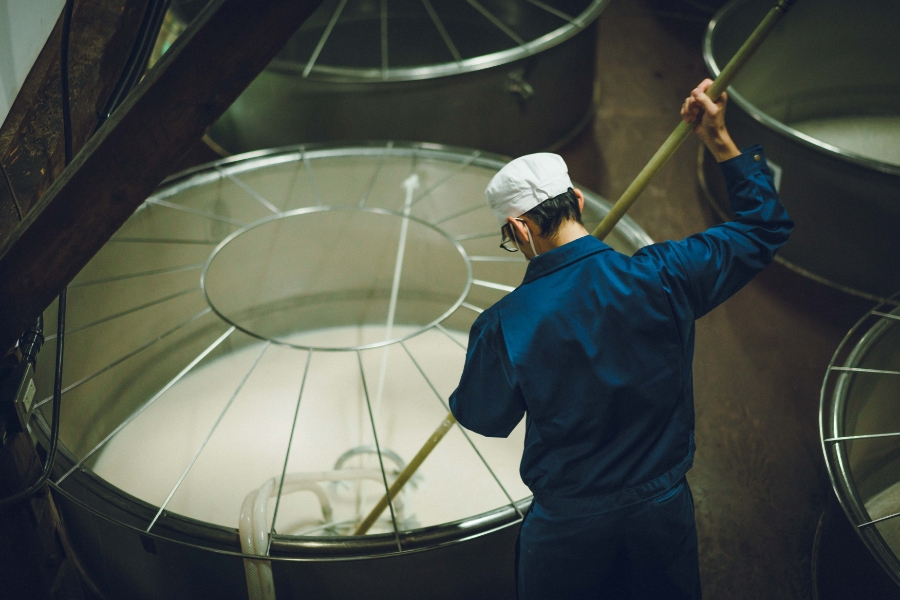The Science and Artistry of Japanese Sake
Now let’s talk about the rest steps of Japanese Sake brewing process. If you have not read before Koji making, please read The Art of Brewing Japanese Sake: A Magic of Traditional Rice Wine from Japan (Introduction ~ Steaming Rice)

cited from https://www.asahi-shuzo.co.jp
Koji Making
Koji mold (Aspergillus oryzae) plays a crucial role in the production of sake. Some of the steamed rice is carefully put with this mold to create koji, the magical ingredient that enzymatically breaks down the starches in the rice into sugars. These sugars are what the yeast will later ferment into alcohol. The koji-rice is grown in a warm, humid environment, allowing the mold to multiply and work its enzymatic magic.

cited by kikusui-sake.com
Yeast Starter (Shubo or Moto)
The next step involves creating a yeast starter, known as “shubo” (mother of Sake) or “moto.” This is processed by mixing koji rice, plain steamed rice, water, and yeast. This mixture sits and ferments, producing a high concentration of yeast. This starter culture is vital as it sets the foundation for the main fermentation, ensuring a robust and controlled conversion of sugars into alcohol.

cited by kikusui-sake.com
Main Fermentation (Moromi)
The main fermentation, called “moromi,” is a multi-stage process that involves gradually adding more steamed rice, koji rice, and water to the yeast starter over several days separately into three times. This step-by-step process allows for controlled fermentation and absorption. The moromi ferments in large tanks for about 2 to 4 weeks, undergoing multiple parallel fermentation. The magic of sake brewing lies happening of two processes at the same time: saccharification (conversion of starch to sugar by koji) and alcoholic fermentation (conversion of sugar to alcohol by yeast). This unique phenomenon, known as multiple parallel fermentation, is a feature of sake production.

cited by kikusui-sake.com
Pressing
Once fermentation is complete, the moromi transforms into a thick mash. This mash is then pressed to separate the liquid sake, known as “sake seishu,” from the solid rice lees. The method of pressing varies, and each technique can influence the clarity and flavour profile of the sake. The sake is then often filtered to remove any remaining solids, achieving a crystal-clear appearance.


cited by kikusui-sake.com
Filtration and Pasteurization
The sake is typically pasteurized to stop fermentation and stabilize its flavour. This can happen twice: once before storage to preserve its freshness, and before bottling to ensure stability and longevity.

cited by kikusui-sake.com
Aging
Most of sake is enjoyed fresh and young, highlighting the vibrant character of the rice and the brewer’s artistry. Some are aged to develop more intricate and refined flavours. Aging allows the flavours to mellow and integrate, creating a more harmonious profile.

cited by kikusui-sake.com
Bottling
Finally, the sake is bottled, sometimes undergoing a final pasteurization to ensure it remains stable and retains its intended flavour profile during distribution and storage.



cited by kikusui-sake.com
A Celebration of Tradition and Craftsmanship
Sake is more than just a beverage; it is a celebration of Japanese culture, tradition, and the unwavering pursuit of perfection. Every sip is a journey through the ages, a connection to the artisans who have dedicated their lives to mastering this breathtaking art form.
Whether enjoyed chilled or warmed, sake is a beverage that demands appreciation and reverence. Its delicate flavours and nuances are a reflection of the care upon it throughout the brewing process. So, the next time you raise a glass of sake, take a moment to savour not only the flavours but also the rich history and craftsmanship that went into creating this truly remarkable drink.









